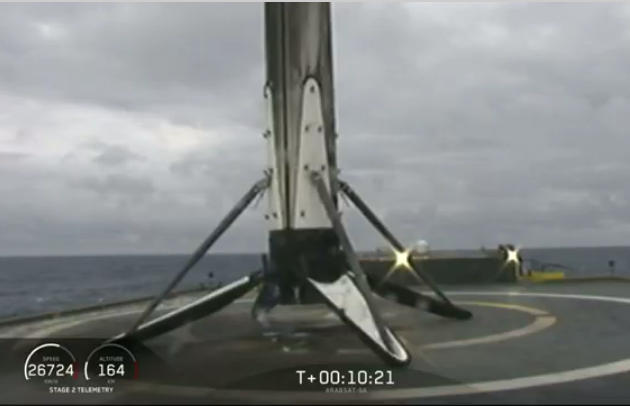SpaceX proposing big launch rate increase in Florida
Capitalism in space: According to documents filed with the FCC, SpaceX is planning a big increase in the number of launches from its two launchpads in Florida in the next few years.
SpaceX projects performing 38 launches from Florida in 2020, 30 from SLC-40 and eight from LC-39A. By 2023, the company projects as many as 70 launches, 50 from SLC-40 and 20 from LC-39A, an annual rate that holds steady through 2025. The vast majority would be Falcon 9 launches, although it expects as many as 10 Falcon Heavy launches a year, all from LC-39A.
These numbers include both Dragon cargo and crew launches, Starlink satellite launches, and a variety of other commercial customers, including launches into polar orbits, something that in the past was reserved for Vandenberg on the west coast, not Florida. The launch estimates are also likely high, as they come from an environmental assessment. SpaceX probably wants to get clearance for this many launches, just in case things go far better than expected. They will likely do less, though I would not be surprised if the numbers are still record-setting.
In addition, the documents outline SpaceX’s plans to build a mobile launch tower to accommodate national security payloads that must be installed on their rocket vertically. Falcon Heavy could provide this service, but right now its payloads get installed horizontally.
Capitalism in space: According to documents filed with the FCC, SpaceX is planning a big increase in the number of launches from its two launchpads in Florida in the next few years.
SpaceX projects performing 38 launches from Florida in 2020, 30 from SLC-40 and eight from LC-39A. By 2023, the company projects as many as 70 launches, 50 from SLC-40 and 20 from LC-39A, an annual rate that holds steady through 2025. The vast majority would be Falcon 9 launches, although it expects as many as 10 Falcon Heavy launches a year, all from LC-39A.
These numbers include both Dragon cargo and crew launches, Starlink satellite launches, and a variety of other commercial customers, including launches into polar orbits, something that in the past was reserved for Vandenberg on the west coast, not Florida. The launch estimates are also likely high, as they come from an environmental assessment. SpaceX probably wants to get clearance for this many launches, just in case things go far better than expected. They will likely do less, though I would not be surprised if the numbers are still record-setting.
In addition, the documents outline SpaceX’s plans to build a mobile launch tower to accommodate national security payloads that must be installed on their rocket vertically. Falcon Heavy could provide this service, but right now its payloads get installed horizontally.

